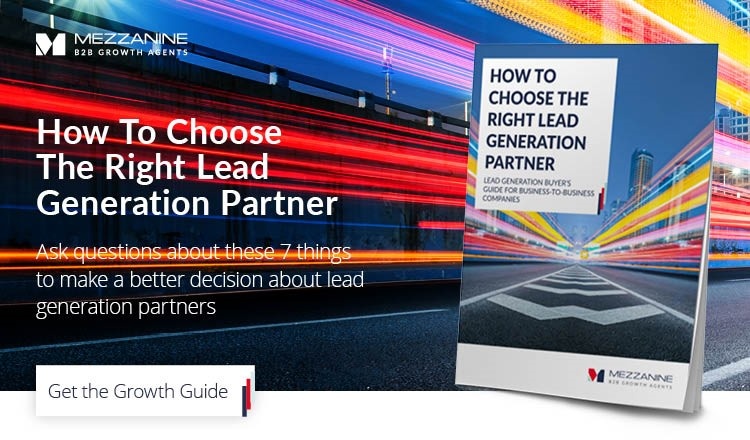How Can B2B Companies Measure Customer Satisfaction?

Have you received a retail store receipt with a link to a “Customer Satisfaction Survey” lately? I'm sure you have - they are now an ubiquitous part of the retail check-out experience.
But for B2B companies, measuring customer satisfaction isn’t quite so easy. Most B2B companies rightly feel that you can’t send an online survey to a client who does tens or hundreds of thousands of dollars of business with you, and expect a fulsome answer.
So how can B2B companies effectively measure customer satisfaction?

Option A: Don't do it
Option A is to not measure customer satisfaction at all.
Before you react in horror, consider that there are hundreds of thousands of B2B companies (both product and service) who are operating successfully today who don't do any kind of CSAT other than by seeing if clients come back.
Why don't they? They might argue that they aren’t sure how to measure customer satisfaction well so they don’t do it, or that they can’t control satisfaction, or that they measured in the past but weren’t willing to make the changes customers wanted. There are dozens of reasons they don't do it. We can argue that they would be better off by measuring CSAT - but they can argue back that they're doing just fine without it. I don't advise this option, but acknowledge that it's accepted reality for a large number of B2B companies.
Option B: Gather CSAT Data and Insight Through Interviews Conducted by a Third Party
Option B is for those companies who want to be proactive in achieving satisfied customers. It includes 2 steps, and is executed by a third party rather than an employee of your business.
The first step in the process is to figure out what data you want from a CSAT process, and to structure questions that can be asked verbally (usually over the phone) of customers. The hardest part of this process is to reduce the number of questions you're asking. Fewer questions is always better than many! And consider asking the Net Promoter Score question as part of the process: How likely is it that you would recommend [your company] to a friend or colleague?
The second step in the process is execution - which involves the 'who' and the 'how'.
The who: your interviewer should be able to effectively represent your brand, but be at arms length from your organization. They can be a trusted consultant, board member or advisor.
The how: your interviewer should be given a list of customers and reach out to them to explain their role and the process. Ideally, they will schedule a time to talk with customers, and then capture the responses to your questions (both data points and qualitative feedback) in Excel or other easy-to-share format. Once they've conducted all the interviews, they should tabulate the responses and provide them to management for action.
Option C: Gather CSAT Data and Insight Through Interviews Conducted by a Senior Manager
Option C is the same as Option B, but the process is conducted by a senior executive within the business.
This can be effective but is not as easy and has some pitfalls: executives can be sheepish about asking the questions and they can be weak at recording the answers; customers can skirt issues and be less than frank in providing direct feedback; and often the results don’t get tabulated well so there aren’t actionable recommendations coming from the evaluation, which defeats its purpose. It’s worse to ask the questions and then do nothing about the responses than it is to not ask the questions in the first place.
Option D: Online is an option for some B2B companies
If you're a B2B company that has a large customer base and sells smaller-ticket services or products, you can safely use an online survey tool. In this instance, if a lot of the customers are users and a small group are decision-makers, I would recommend an online-survey for the users and a telephone interview for the decision makers. To do this you’ll need email addresses for everyone. Put your questions together in an online survey and send them out. Keep in mind the KISS rule here: Keep is SUPER SHORT!
Watch out for the Shadow Effect
When you decide what questions to ask in your customer satisfaction assessment, keep the “shadow effect” in mind.
The “shadow effect” is when one parameter of satisfaction greatly affects the others. The best example is the airline industry. After doing thousands of customer satisfaction surveys, the airlines realized that on-time arrival had a major “shadow effect” on their ratings. If a flight arrived on time, passengers would rate the whole experience—from food to service—satisfactory. If the flight arrived late, passengers would say that the food was bad, the flight attendants rude, and the airplane dirty. On-time arrival colored their view of the whole experience.
Not many companies know if they have a “shadow effect”—a single parameter that affects how customers feel about everything else. Figuring that out and then delivering exceptionally well on that one parameter is a strategically powerful way to improve B2B customer satisfaction (not just your customer satisfaction rating).
B2B companies can get a huge amount of value from customer satisfaction evaluation—not just feedback on what they’ve done well in the past, but what they can do well in the future. If you're smart about it, you can also figure out the key drivers of satisfaction, which helps you focus resources on the areas that matter most to your customers. But, effective B2B customer satisfaction assessment is all about HOW you do it—and doing it poorly is worse than not doing it at all.
.png?width=2361&height=488&name=Mezzanine%20Logo_Horiz_RGB_on%20blue%20(1).png)

